Initial release date 1983 Genre Platform game | Publisher Screenplay | |
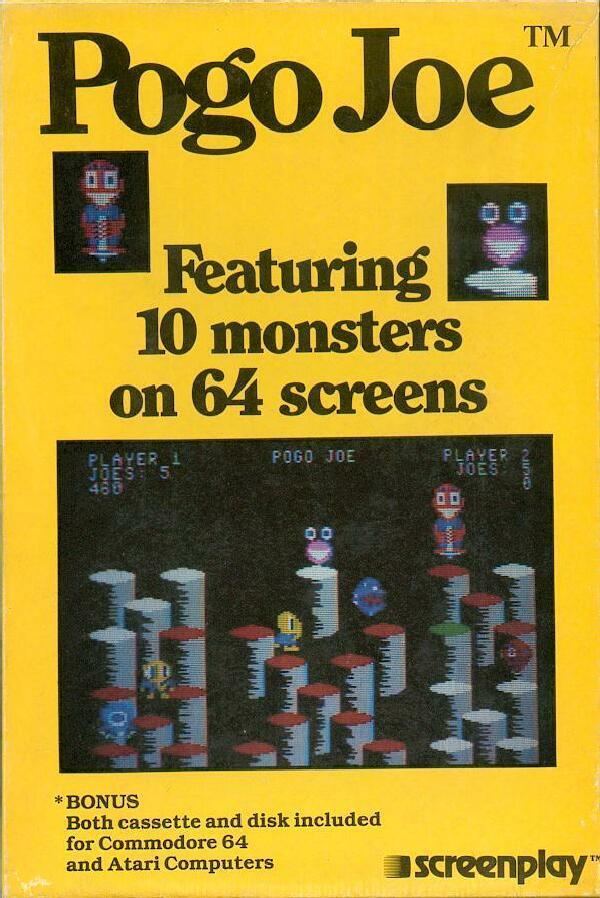 | ||
Designer(s) William F. Denman, Jr.Oliver Steele Similar Park Patrol, Realm of Impossibility, Rally Speedway, Gateway to Apshai, Aztec Challenge | ||
C64 longplay pogo joe first 15 levels 720p
Pogo Joe is a computer game for the Commodore 64 and Atari 8-bit family, written by William F. Denman, Jr. and Oliver Steele. Michael Haire did the artwork, and Steven Baumrucker wrote the sound and music subroutines, designed and named the levels, and wrote the music. It was published by Screenplay in 1983. Pogo Joe is a Q*Bert clone with several extra features.
Contents

Pogo joe atari 800xl
Summary
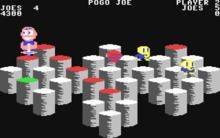
The player takes the role of the eponymous Pogo Joe, a boy on a pogo stick. The game takes place over 65 different levels, each consisting of a different arrangement of barrels. To complete a level, Pogo Joe must jump on every barrel.
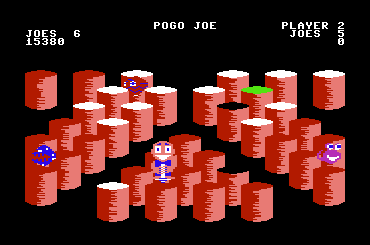
To make Pogo Joe's job harder, several enemies inhabit the levels. They first start out as spherical "eggs" of different colours. Colliding with these "eggs" kills the enemy within them, but if left alone for a few seconds, the "eggs" hatch into different sorts of enemies, contact with which is fatal to Pogo Joe.
The tops of the barrels have different colours depending on their status or functionality:
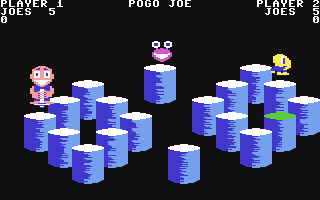
On later levels, some enemies change red barrels back to white when jumping on them.
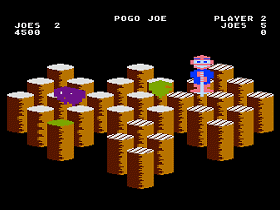
On some levels, the barrels appear with just their tops, without the body beneath it. Jumping off a barrel makes it disappear, becoming inaccessible for Pogo Joe. Once Pogo Joe becomes trapped and cannot jump anywhere any more, the game advances to the next level. Pogo Joe receives "Shadow Bonus" points if few enough barrels are left on the level. Also, on some levels, the barrels initially appear as invisible, and the player has to guess where the barrels are so Pogo Joe can jump on them.
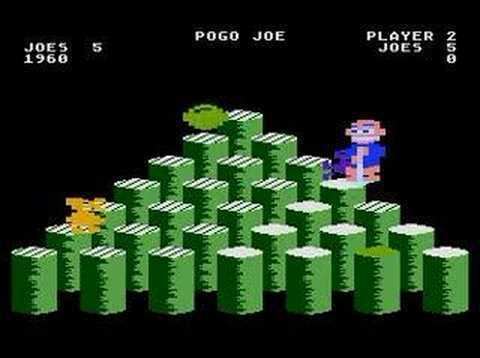
This was one of the first software projects that used a "team" approach, with game designers, programmers, musicians, and artists coming together to make the software work. Today this is the norm, but in 1983 this was a novelty.
Reception
Ahoy! wrote of Pogo Joe "Sound like Q*Bert? You bet". It criticized the sluggish controls, but concluded that "excellent" graphics and "the multiple speed variations make it perfect for a home with lots of kids".
